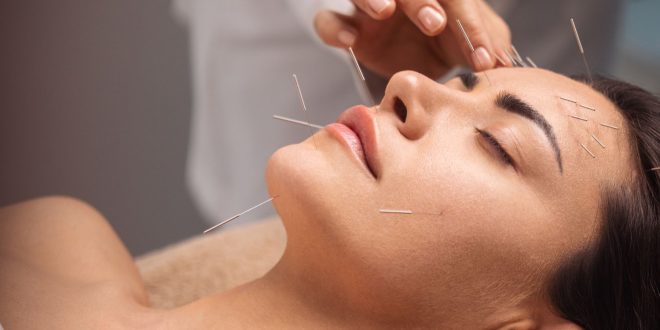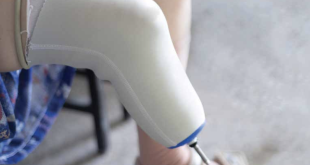In Nepal, acupuncture has seen a surge in practitioners, offering a sensory experience that goes beyond traditional needling, with diverse approaches like moxibustion, acupressure, and electromagnetic impulses.
As we explore acupuncture’s impact on the body, it’s not just about relieving chronic pain but uncovering its potential in treating diverse conditions, from digestive ailments to emotional well-being, painting a holistic canvas of healing.
Acupuncture refers to the practice of insertion of slender, solid, metallic needles into the skin. These needles are subsequently activated through the practitioner’s gentle and precise hand movements or by employing electrical stimulation. Acupuncture is an integral aspect of Traditional Chinese Medicine (TCM), an ancient practice wherein practitioners assert that the human body comprises over 2,000 acupuncture points interconnected by pathways known as meridians. These meridians facilitate the flow of energy, referred to as Qi (pronounced “chee”), which is crucial for maintaining overall health. It is believed that any disruption in this energy flow can lead to disease. Through the strategic application of acupuncture at specific points, the aim is to enhance the flow of Qi, consequently contributing to improved health. This article delves into the essence of acupuncture, exploring its impact on the body, and the diverse conditions it may address.
A Sensory Experience
In acupuncture, ultra-thin needles are employed, offering a unique sensory encounter for individuals undergoing the treatment. As the needle is gently inserted, many individuals describe minimal pain, often characterizing the sensation as a subtle pressure or ache. Some practitioners enhance the therapeutic experience by using heated needles or applying a mild electric current. The result of acupuncture sessions varies among recipients, with some people reporting heightened energy levels, while others express a profound sense of relaxation. Proper needle placement is crucial to prevent discomfort during treatment. Additionally, the stringent sterilization of needles is imperative to ward off potential infections. Seeking the expertise of a qualified acupuncture practitioner is highly recommended and lately Nepal is witnessing a boom in the number of Acupuncture practitioners.
Acupuncture is the ancient Chinese wisdom of healing, where the delicate dance of slender needles activates the body’s innate energy, Qi, fostering improved health.
Beyond traditional needle application, alternative forms of stimulation are occasionally employed over acupuncture points, introducing additional dimensions to the therapeutic process:
- Heat (moxibustion)
- Pressure (acupressure)
- Friction
- Suction (cupping)
- Impulses of electromagnetic energy
These varied approaches showcase the adaptability of acupuncture, allowing practitioners to tailor the experience based on individual needs and preferences.
Impact of Acupuncture on the Body
Acupuncture points are believed to elicit stimulation of the central nervous system, triggering the release of chemicals into the muscles, spinal cord, and brain. These biochemical changes are thought to activate the body’s inherent healing capacities, fostering both physical and emotional well-being.
Acupuncture Beyond Chronic Pain
People mostly turn to acupuncture to alleviate chronic pain, such as arthritis or low back pain. However, it’s essential to recognize its broader applications worldwide. Before embarking on an acupuncture journey, engaging in a discussion with your doctor is advised. Various conditions may derive potential benefits from acupuncture, extending beyond pain relief. It can treat a range of diseases, all the way from digestive diseases like- gastritis, Irritable bowel syndrome, hepatitis, hemorrhoids, etc. to emotional ailments like anxiety, depression, insomnia, nervousness, etc.
Numerous studies conducted by the National Institutes of Health (NIH) have affirmed the effectiveness of acupuncture as a standalone treatment or when integrated with conventional therapies. The following conditions have shown positive responses to acupuncture intervention, according to NIH studies:
- Nausea induced by surgical anesthesia and cancer chemotherapy
- Post-surgical dental pain
- Addiction
- Headaches
- Menstrual cramps
- Tennis elbow
- Fibromyalgia
- Myofascial pain
- Osteoarthritis
- Low back pain
- Carpal tunnel syndrome
- Asthma
Furthermore, there is evidence suggesting the potential efficacy of acupuncture in aiding stroke rehabilitation. These findings underscore the diverse range of conditions for which acupuncture may offer therapeutic benefits, reinforcing its role in promoting overall health and well-being.
Acupuncture has gained popularity as an adjunct to conventional allopathic medical treatments and is offered even at prestigious academic medical centers around the globe. However, despite numerous studies, the mechanism for how acupuncture might be functional physiologically is yet to be determined. Hypotheses include that the stimulation influences inflammatory markers induces hormonal changes, or even that the pressure itself manipulates loose connective tissue that causes immunomodulation. It is theorized that analgesia results as well from the release of natural opioids at both spinal and supraspinal levels. Functional MRI has shown physiologic changes in the central nervous system while undergoing acupuncture.
Acupuncture is quite accessible in Nepal, in that you can find acupuncture services in most of the towns and bigger cities. Safety measures and regulations reflect cultural perspectives, emphasizing the qualifications of practitioners and fostering community awareness about the benefits of acupuncture. However, due to the lack of comprehensive scientific explanations aligning acupuncture with Western medical principles, the practice continues to be a subject of controversy.
In conclusion, acupuncture weaves together the threads of ancient wisdom and local cultural perspectives, offering a unique approach to holistic well-being. From aligning with Prana to addressing prevalent health concerns, acupuncture remains a timeless beacon of healing practiced in Nepal. We can find harmony and balance, bridging traditional wisdom with contemporary health practices.
 Medicosnext
Medicosnext




